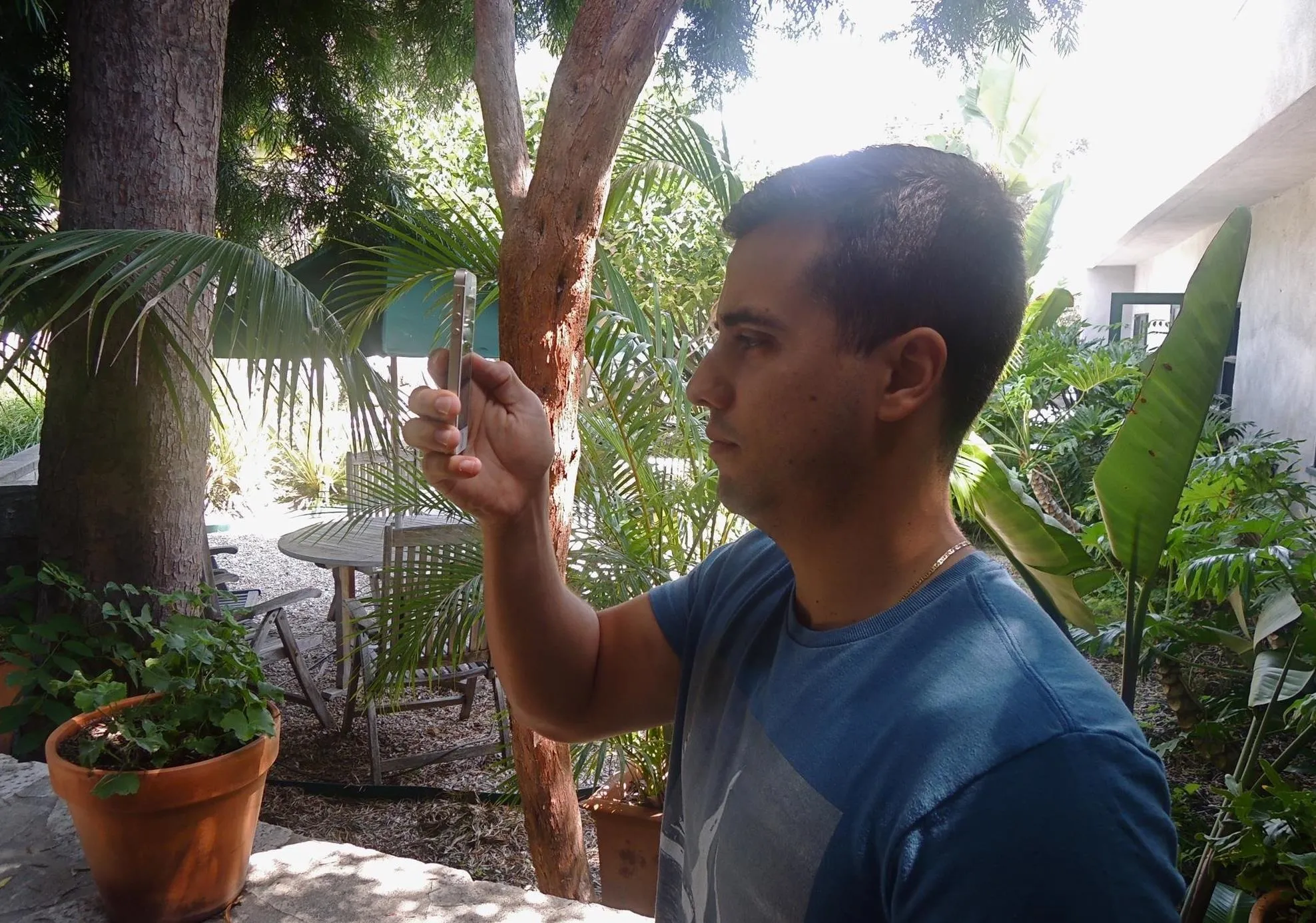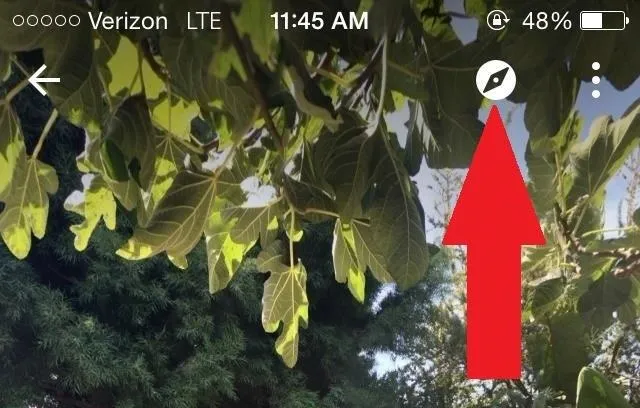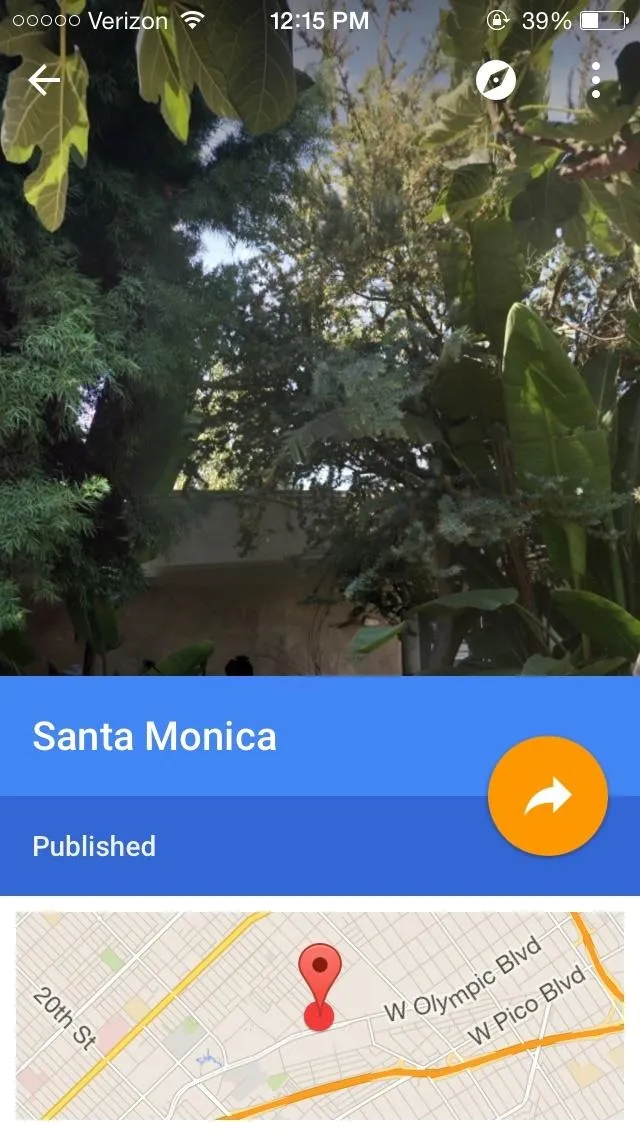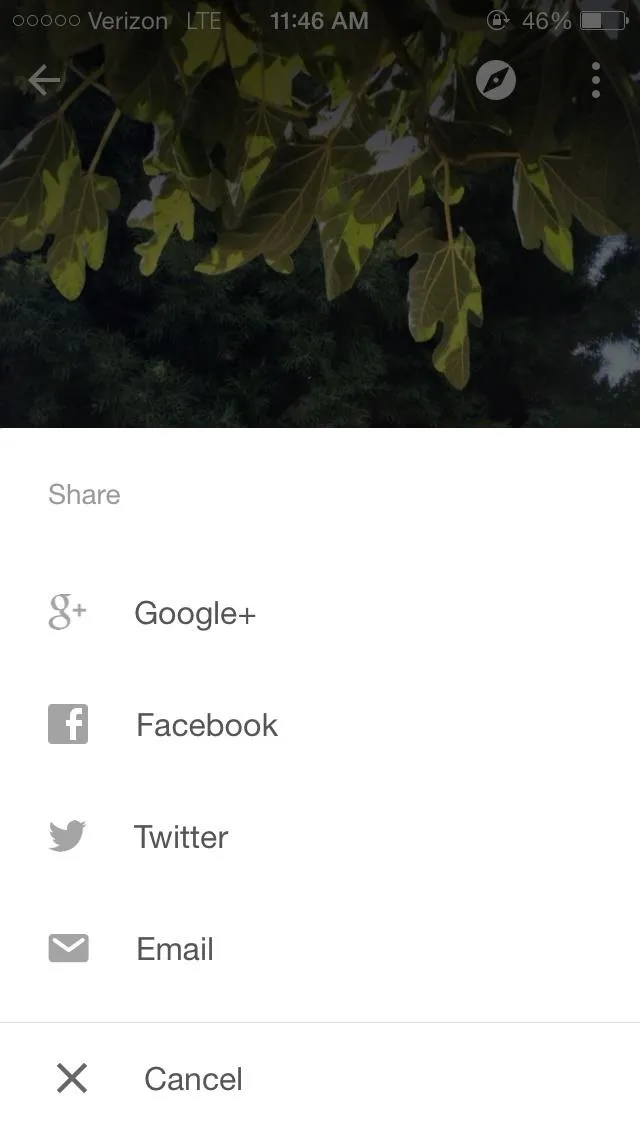I've been using the Photo Sphere Camera from Google on all of my Android devices ever since it came out on Jelly Bean 4.2, which lets me create riveting 360° panoramic images.
Apple has its own built-in panoramic mode, but it only takes 240° images, and I've never found any similar iPhone apps that I liked, though, Microsoft's Photosynth came close. Instead, I usually find myself making tiny planets with Circular+ more often than immersive 360° panoramas.
Thankfully, Google has finally released their prized Photo Sphere Camera for iOS, available for free in the App Store. Go ahead and download the app and follow along with me below as I show off how to take and share cool Photo Sphere images on an iPhone, as well as a few of its other cool features.
Taking a Photo Sphere Image
Before you open the Photo Sphere Camera up, find somewhere to begin shooting. While outdoors is vastly preferable (because of the lighting and open space), indoors will do fine with a little practice, as long as nearby objects don't interfere.
Now, open up the app and hold your phone vertically with both hands, no more than 12-inches from your face. The portrait orientation allows for betting "stitching" of photos, while the proximity to your body keeps the perspective close and controllable.

When you're ready to begin shooting, tap on the orange camera icon at the bottom left corner and point the camera at the orange dot to begin.
From there, rotate in a full circle, capturing all of the orange dots by centering them inside the camera circle. Google suggests capturing around the horizon first, then capturing below and above it—all at a slow pace. Make sure that your phone is in roughly the same position during this entire process.




In case you accidentally stitch a wrong photo, tap on the undo icon at the bottom left. If you want to start over from scratch, tap on the X icon at the bottom right.
While you only need 10 photographs stitched together to complete a Photo Sphere, I suggest you complete the entire thing to give the panorama a more well-rounded feel. Of course, you don't have to go the full 360 degrees, but there's nothing like an all-encompassing panorama shot.
When the progress bar around the stop icon turns green, that's how you'll know you're finished. Tap it to begin processing.
Processing Your Photo Sphere Image
On the next page, your Photo Sphere will begin stitching together, taking anywhere from a few seconds to just under a minute, all depending on how many photographs you've taken.




When it finishes processing, tap on it to view your final product. Below you can see a flattened Photo Sphere of the courtyard at the WonderHowTo HQ. You can check out the true Photo Sphere here on Google Maps.

Using your finger, you can shift through the 360° view of your panorama in all its glory, or hit the Compass icon to move through your photo by moving your phone.

Sharing Your Photo Sphere Image
Whether it's the towering buildings in the city or just your neighborhood park, you can share your immersive Photo Spheres with others through Google Maps.
Directly from the Photo Sphere Camera app, go to the Photo Sphere you want to share and tap on Publish to Google Maps. Select your Google account, then finish the process by tapping on Publish.




When your Photo Sphere posts, others will be able to view it through either Google Maps or your Google+ page, along with your full name, the location it was taken, and the date it was created.
In addition to Google apps, you can share your Photo Sphere through Facebook, Twitter, and email by tapping on the orange share icon on your Photo Sphere.




Additionally, all Photo Spheres are saved to your Photos gallery. From there, you can share these like you would any other picture, but they will show as a panorama, rather than the immersive Photo Sphere.
The Photo Sphere Camera Settings
In order to access the settings, tap on the three-dash menu at the top left of the Photo Sphere Camera app. A side menu will appear where you can access the Camera, Gallery, Tips, and Settings.
In the settings, you can change the resolution of your Photo Sphere, toggle geotagging, select whether Spheres are saved to an album in your Photos app, and select whether you want them to upload on a data connection or only when connected to Wi-Fi.




Now that you know how to master the art of Photospheres, it's time to share your creations with us. Post the image in the comments below, or give a link to the image on Google Maps. Let's see what you've got.




Comments
No Comments Exist
Be the first, drop a comment!